5G Transformation Hub
5G Enables Faster and More Flexible Filming
Mango TV is using a portable 5G base station and edge computing engine to accelerate the filming and production of its television programming.
Deployed to create a popular music show in Hunan province, China, the solution has sufficient uplink capacity to capture video streams from dozens of cameras and microphones simultaneously.
Select a project
Contents
Challenge
The production of many popular television formats requires filming in multiple indoor and outdoor locations, making it expensive and time-consuming to install wired networks to transfer video images and audio from the set to the editing and production teams. Deploying wired networks can also be difficult in some environments, while limiting the flexibility to reposition cameras and change filming angles.
Solution
Mango TV is trialling a private 5G network provided by China Mobile Hunan to connect cameras and microphones to a portable base station. ZTE’s 5G CampSite solution brings together 5G radio components, a backhaul unit to connect to China Mobile’s core network and edge compute capacity in a portable cart that can be moved easily from location to location. Incoming video and audio streams are detected by the edge computing engine inside the 5G CampSite and then offloaded to the local live production system.
Impact & Statistics
Thanks to the edge computing engine, the system transmission delay in the 5G private network is down to about 80 ms – well below Mango TV’s target of 160 ms. Further, as the CampSite solution dedicates more spectrum capacity to the uplink, than the downlink, upload speeds can reach 636 Mbps - more than enough to support uploads from 20-30 cameras simultaneously.
Wider implications
The private network solution being trialed by Mango TV could be used to efficiently produce many kinds of TV shows, giving the media industry a means to reduce the cost and time required to produce new content. ZTE is now exploring how CampSite could provide the connectivity required by a variety of entertainment formats, such as eSports and concerts, as well as other sectors of the economy, including exhibitions, mining and emergency services. ZTE has already deployed the CampSite solution to support rescue efforts following an earthquake in Sichuan province
Stakeholder
Ren Jie, ZTE, [email protected], Qin Hua, China Mobile Hunan, [email protected], Kuang Wenbin, Hunantv.com Interactive Entertainment Media Co., Ltd.(Mango TV), [email protected]
02
5G Enables Faster and More Flexible Filming
A private 5G network for TV production can support average upload speeds of 550 Mbps
As the digital entertainment market becomes intensely competitive, content creators need to move fast and keep costs down. In the television industry, the time and money it takes to make content is heavily dependent on where and how programmes are made. In the case of shows that are filmed in multiple locations, it can be very expensive and time consuming to install the wired networks needed to transmit the video and audio feed to the production and editing teams.
In Hunan province in China, Mango TV, a leading producer of variety shows, is using 5G to reduce these costs and increase its flexibility. Working with ZTE and China Mobile Hunan, Mango TV is trialling a private 5G solution that can wirelessly upload content at speeds of more than 550 Mbps, enabling it to capture high definition content from more than 20 sources at once. The incoming content is analysed by an edge computing engine, which detects the video and audio streams, and offloads them to an on-site live production system via its front ports.
Mango TV is using ZTE’s 5G CampSite solution, which combines 5G radio modules, backhaul units, an edge computing engine and some auxiliary equipment into a small cart that is compact enough to pass through standard corridors. If necessary, the radio mast on the cart can be elevated to a height of six metres to extend coverage over a wider area.
Employing China Mobile’s spectrum, the private 5G network connects the CampSite to the on-location cameras and microphones, while the backhaul unit can use a public 4G/5G cellular network, an Internet cable, a satellite link or dedicated transmission line to connect to China Mobile’s core network. This backhaul connection is used to transfer the signals required to get the CampSite up and running, or to enable users of the CampSite to access public services, if necessary. As all the video and audio content is processed locally, the CampSite engine reduces transmission costs and significantly lowers the time delay.
“The edge computing engine also provides functions, such as bandwidth/traffic management, eBridge, EdgeQoS, low-latency video, and self-service portal, to meet the requirements in performance, general security, network management operation and maintenance,” explains Ren Jie of ZTE. “And it supports capability openness and direct deployment of third-party apps.”
To ensure the security and reliability of the private network, the CampSite’s resources can only be accessed by pre-authorised cameras. Further, the key operational indicators of the private network are displayed on an independent screen in the live production system so that technical personnel can then monitor the stability of the solution in real-time.
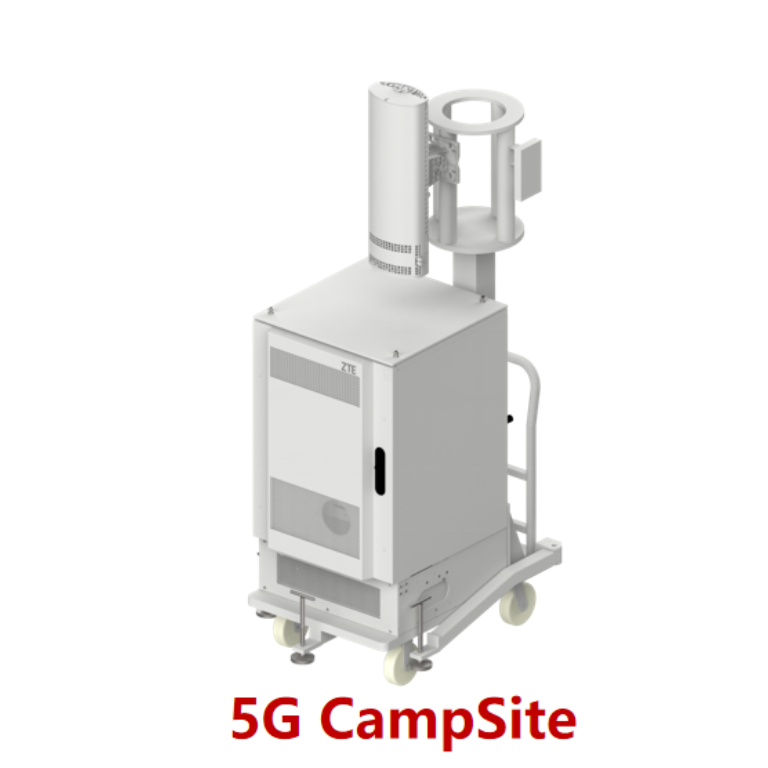
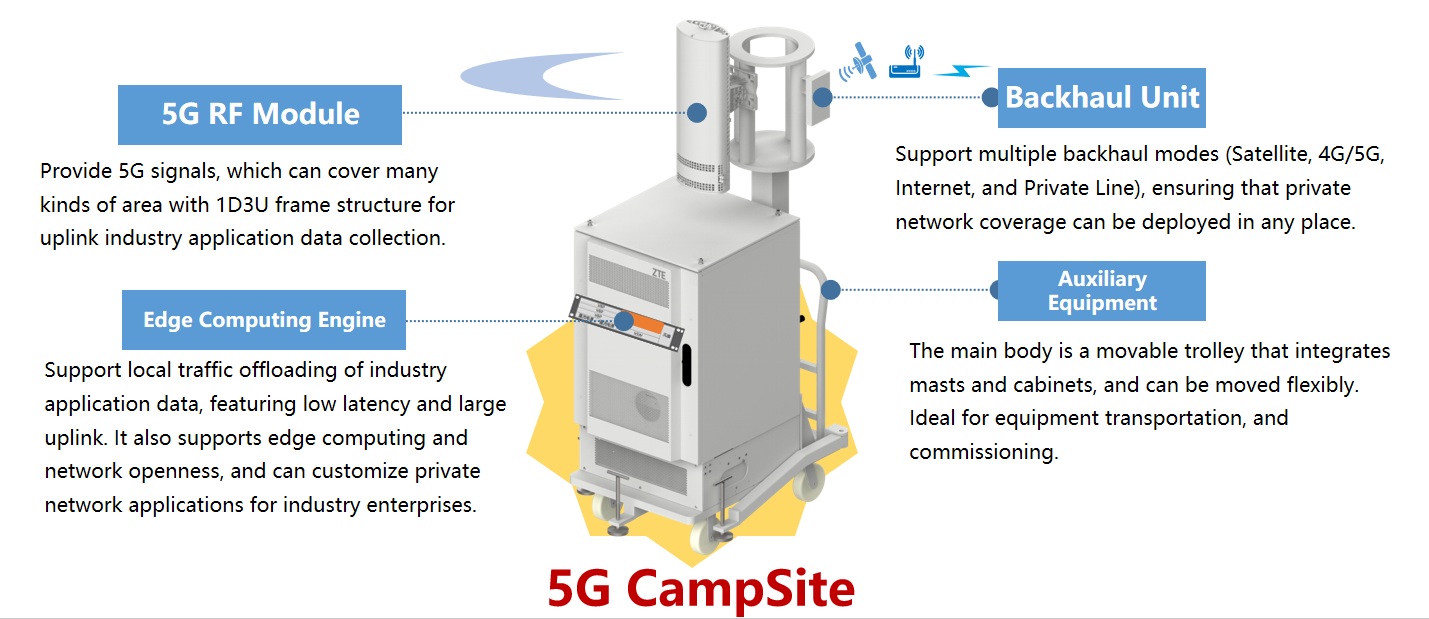
03
Fast and efficient production of a popular music show
Mango TV used the 5G CampSite solution to help film the second series (12 episodes) of the popular music show Call Me by Fire, which was filmed in July 2022. During the filming, nine cameras used 5G encoders to each upload 8 Mbps HD video streams in parallel to the CampSite. ZTE says the Mango TV team fed back that “the performance is much better and the stability is very good.”
The trials found overall transmission latency of the entire system was 80 ms. With “the 1D3U uplink frame structure” used for the filming, the private network was able to achieve peak upload speeds of 636 Mbps, while the average rate was consistently above 550 Mbps, which is sufficient to transmit large-bandwidth video and audio streams. In lab tests, the CampSite has processed 25 channels simultaneously, but the private network has sufficient bandwidth, in theory, to support 100 channels of 6 Mbps IP streams.
“The implementation of the wireless filming private network for Call Me by Fire has once again proved that “science and technology constitute a primary productive force”, says Kuang Wenbin of Mango TV. “This system significantly reduces the difficulty and cost of filming network construction, and saves a large amount of expenditure for the team. The wireless private network also greatly improves the flexibility of photographers, so that they can capture wonderful moments instantly. Undoubtedly, the private network benefits the audience most, who enjoy the brilliant show.”
Mango TV has also used the 5G CampSite to support the production of its Moments in Vocal Studio series. “In most cases, the CampSite can be delivered to the location specified by Mango TV within several hours, so the 5G filming private network by this CampSite can be up and running within one hour to meet the filming requirements quickly,” says Ren Jie of ZTE. When using wired connections, it can take two days to set up the cameras and microphones.

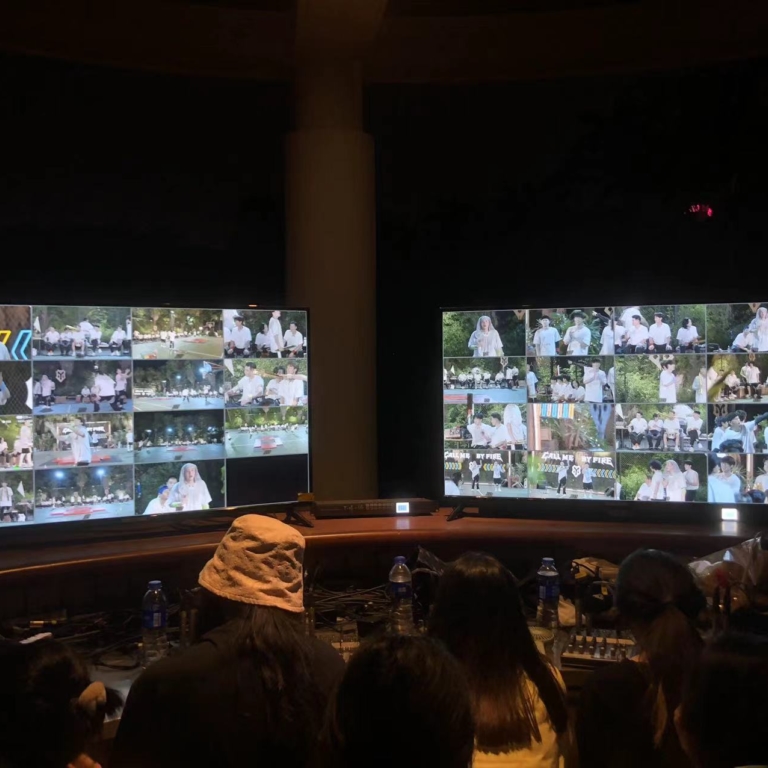

Kuang Wenbin
Mango TV
04
5G provides stability, coverage and performance
The widespread availability of 5G in China is making it increasingly practical for the TV production sector (and other industries) to use cellular connectivity for mission-critical applications, such as filming. “Previously, some media companies have tried to use 4G or other similar (Wi-Fi) wireless technologies to transform the filming network,” says Ren Jie. “However, due to poor wireless connection stability, insufficient coverage, and low uplink rate, all these attempts have failed.”
As the entire CampSite system is based on the standard 5G protocols, it is compatible with any modules and terminals that comply with the 3GPP protocols. Furthermore, the system can use the most efficient and least congested backhaul links available, whether they be cellular, wireline or satellite. That means the 5G CampSite could be a highly convenient solution in any scenario where high-speed connectivity is required on a temporary basis.
ZTE is testing how CampSite can support a variety of use cases. For example, it teamed up with the Sichuan Branch of China Mobile to deploy 5G CampSite in response to an earthquake in Shimian County, Sichuan Province. The solution was used to rapidly provide a comprehensive emergency communications system, which can be used by rescuers’ mobile phones to connect to the local emergency command centre and temporary shelters.
ZTE says multiple 5G CampSites were up and running within one hour of arriving in the stricken area, where they were used to meet the high demand for images, videos, and voice information transmission. The integrated radio antenna equipment provided people impacted by the earthquake with “4G/5G multi-frequency multi-system capacity”.
ZTE says the 5G CampSite is small enough to be deployed in places that couldn’t be reached by big and heavy emergency communication vehicles. The CampSite differs from a “traditional” dedicated UPF+MEC (user plane function plus multi-access edge computing) system in that it only requires one low power computing board, according to ZTE, which says a traditional UPF+MEC needs at least three servers, two switches and two firewalls, and generates power consumption over 3 kW, compared with about 750 W for the CampSite. Further, ZTE says 5G CampSite reduces the latency of local information exchange by 80%.
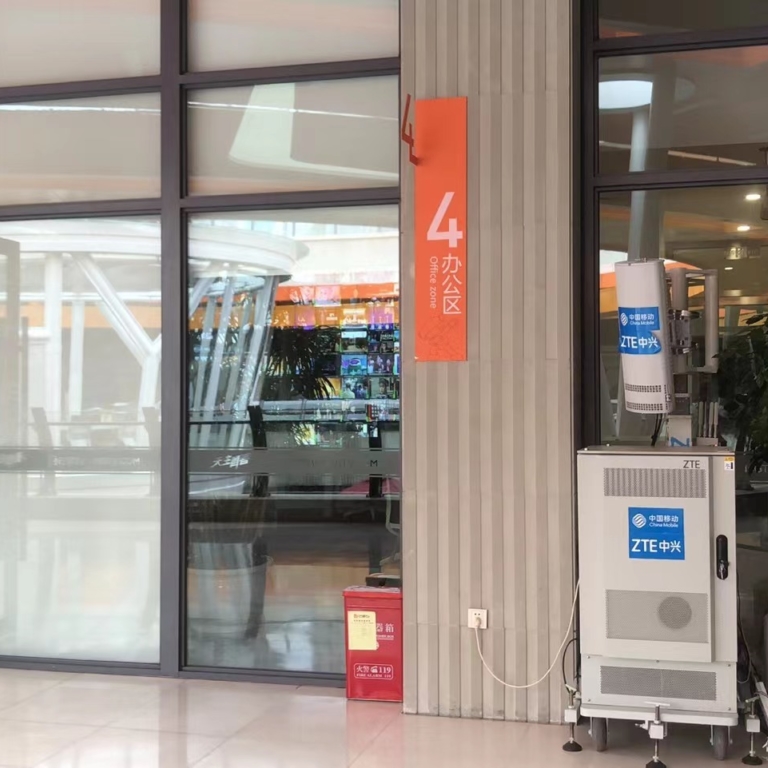
Ren Jie
ZTE
05
Applications in other sectors of the economy
ZTE anticipates the CampSite solution could also be used in mines to support vehicle scheduling, data collection and video surveillance, and on construction sites to interconnect with video monitoring and remote control platforms through its edge computing engine. Video monitoring can be used to detect dust, and check the operational status of engineering vehicles in real time, and identify safety issues, such as staff not wearing helmets. In hazardous environments, manned vehicles could potentially be replaced by unmanned vehicles remotely controlled via the 5G CampSite system.
In the television sector, ZTE is now looking to deploy the 5G CampSite to support live television broadcasts, as well as pre-recorded shows, such as Call Me by Fire. ZTE is also exploring how the 5G CampSite solution can support other forms of video backhaul, eSports, concerts and industry expositions.
As the CampSite successfully completes the trials, ZTE is working with China Mobile to commercialise the solution – the two companies are likely to bundle private 5G connectivity with the 5G Campsite equipment, which could then be rented by a business for a specific project.
At the China New Media Technology Exhibition in Changsha, Hunan province in September 2022, ZTE and China Mobile Hunan unveiled the Guangmang 5G Dense Audio and Video Transmission System, which incorporates the 5G CampSite. The two companies said the system offers lower latency, higher image quality and stronger anti-interference capabilities than other transmission systems.
In future, ZTE also hopes to work with operators outside China to provide enterprises with the 5G CampSite system, together with private 5G connectivity they can use to support mission-critical applications.
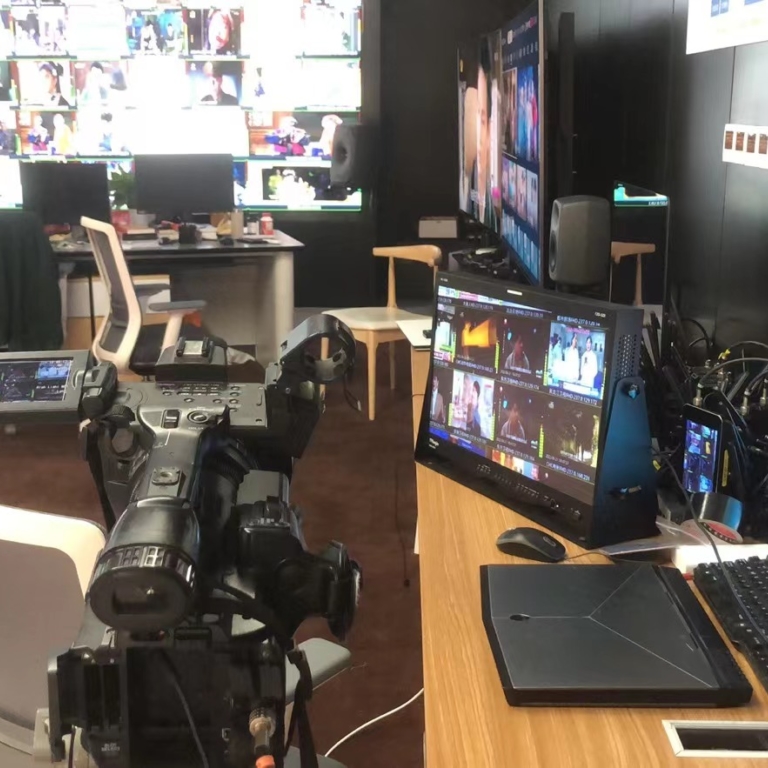
06
About
About the GSMA
The GSMA is a global organisation unifying the mobile ecosystem to discover, develop and deliver innovation foundational to positive business environments and societal change. Our vision is to unlock the full power of connectivity so that people,
industry, and society thrive. Representing mobile operators and organisations across the mobile ecosystem and adjacent industries, the GSMA delivers for its members across three broad pillars: Connectivity for Good, Industry Services and Solutions, and Outreach. This activity includes advancing policy, tackling today’s biggest societal challenges, underpinning the technology and interoperability that make mobile work, and providing the world’s largest platform to convene the mobile ecosystem at the MWC and M360 series of events.
For more information, please visit the GSMA corporate website at www.gsma.com.
Follow the GSMA on Twitter: @GSMA.
GSMA 5G Transformation Hub
The GSMA 5G Transformation Hub is a source of information on some of the most innovative 5G solutions in the world. This portal contains case studies detailing design, benefits, key players, measured value and the future impact of scaling up these 5G solutions worldwide. The 5G Era is now firmly established and this family of standardised GSM technologies, including mmWave, are being rolled out successfully across the globe. The GSMA 5G Transformation Hub, launched at MWC Barcelona in 2022, provides details of how 5G is best placed to deliver real value for a range of key sectors including manufacturing, energy, transportation, media and live entertainment, smart cities and construction.. Many more case studies will be added, in the coming months, covering even more industries and the GSMA is asking Members to nominate innovative 5G case studies to add to this global digital showcase. The 5G Transformation Hub and this particular Case Study are both sponsored by Qualcomm.
About this case study
This case study is for information only and is provided as is. The GSM Association makes no representations and gives no warranties or undertakings (express or implied) with respect to the study and does not accept any responsibility for , and hereby disclaims any liability for the accuracy or completeness or timeliness of the information contained in this document. Any use of the study is at the users own risk and the user assumes liability for any third party claims associated with such use.